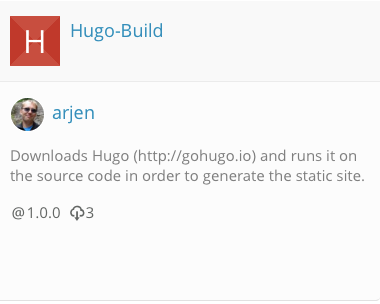Week 50, 2015
It was a major week for programming languages as a couple of big things happened. There was the PHP 7 release, and Swift's anticipated release as an open source project happened. Additionally, Let's Encrypt came out of beta

It was a major week for programming languages as a couple of big things happened. There was the PHP 7 release, and Swift's anticipated release as an open source project happened. Additionally, Let's Encrypt came out of beta
The Weekly Notes, bringing you a short commentary about the tech world. This week, my own Hugo Wercker build step, the Raspberry Pi Zero, and some thoughts about certification.
For the DevOps meetup in Melbourne I gave a presentation on preparing deployable code using Docker and Jenkins. The presentation is based on articles I've written about the same subject.
Introducing my weekly notes, an article about interesting things I've run across in the past week. This week featuring trying out Let's Encrypt and AWS releasing version 1 of their Go API.
Recently AWS introduced their CloudFormation Designer tool. Part of CloudFormation, this Designer allows you to visually design and edit your templates. In this article I try to show you how you can use the tool and fit it into your workflow.
I wanted something that could ensure my usage of the Reporter app would be logged in my journaling app of choice, so I built it.
Different parts of your project might require different environments. Additionally, when building web projects for clients you don't always have control over the server your project will run on. Both of these issues can be solved, and this article will show how you can use Docker to have a better and more efficient Jenkins setup.
fcd is a zsh plugin I built for easily switching between different projects on the command line.
For the Symfony2 meetup in Melbourne I gave a presentation on splitting a project into separate layers, why you might want to do this, how it works, what some of the downsides are, and why Symfony2 is a good fit for this.
Sometimes the default size for your root volume in an EC2 instance isn't good enough. As there is no clear documentation on the best way to do this for CloudFormation managed instances, I'm describing my methods for increasing the size here.
The first weekly update for my month of Golang. I'll start this out with various resources I used to get up to speed with the language, before I'll move on to idea behind the structure for the Bugsnag SDK and how this is progressing.
In an attempt to stop my mind from constantly jumping to the next interesting thing I encounter, I decided to start doing monthly research projects. I'm starting this with something that has been on my list for quite a while now, learning the language Go (or Golang as it's often called).
This article describes setting up a single security group with cloudformation that you can use to ensure you can easily gain access to your servers wherever you are. And as a bonus it describes how you can update the parameters of your stack from the command line without needing access to its template.
In this tutorial we will set up a basic Hugo project and then configure a free tool called Wercker to automatically deploy the generated site any time we add an article.
At the start of the year I mentioned writing a step for Wercker to help with automating deployments for Hugo sites such as this site. In the community forums people requested that I write a tutorial for it, and that has now gone up on the site.
It also works as a general introduction of using Wercker steps, so even if you’re not interested in Hugo itself the tutorial might be useful for that purpose.
I mentioned that I was planning on building a step for making it easier to deploy Hugo sites using Wercker, and I've done so.
